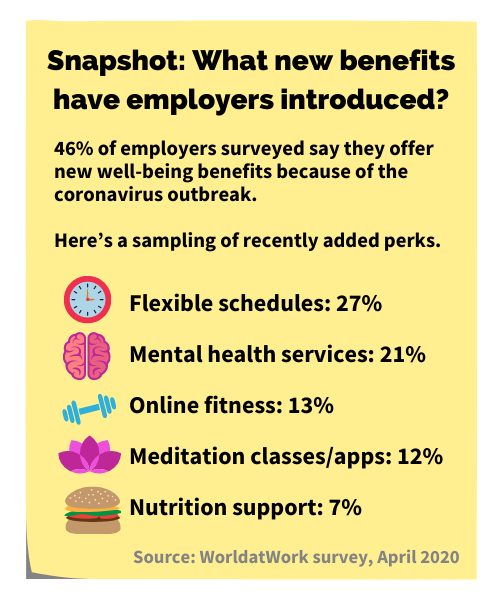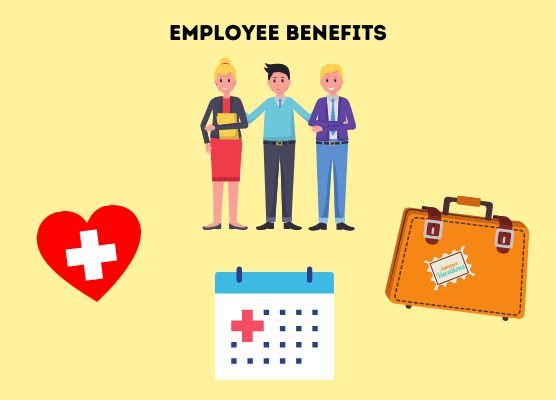Rethinking benefits and PTO in light of the COVID-19 crisis

The COVID-19 pandemic has many an HR department scrambling to fully understand the terms of existing employee benefits programs and reshaping in order to better serve the needs of both workers and the company itself. Providing attractive employee benefits always has been crucial to retaining talent, but demonstrating concern during tough times proves especially impactful.
“How you treat your employees now will be remembered in the future,” says Heather Deyrieux, president of HR Florida State Council, Inc., the state affiliate for the Society for Human Resource Management.
Besides boosting loyalty, companies definitely want to take measures that keep workers healthy and able to concentrate on their tasks. However, organizations still need to operate within parameters that will keep the business productive and financially sound. Such a balance can be difficult in the best of times, let alone such challenging ones.
Here’s a rundown of some of the employee benefits companies are taking a close look at in light of the COVID-19 situation:
Healthcare
Obviously, HR personnel are fielding many questions regarding medical coverage, as it is vital for employees to keep abreast of how their insurance handles COVID-19 diagnostic testing and treatment. Also, since the IRS has permitted medical plans governed by Section 125 provisions to offer additional periods to enroll into plans outside the already defined qualifying life events, many HR reps are busy passing this information along to employees who may want to take action. Workers with spouses or children who have been laid off may be able to add them as dependents.
In line with the need for social distancing, promotion of virtual medical services has increased. As noted by Eric Salyers, Senior HR Business Partner, Benefits, at Nonprofit HR, “Covering telehealth visits in full is seen as a way to provide easier access to care for homebound employees not eager to leave their homes.”
Psychological and emotional support
Attention to physical health, however, is just part of the story. As a growing number of people report depression and anxiety due to factors such as isolation, uncertainty, and household discord, organizations are upping their game.
“Now, more than ever, mental health and well-being are at the forefront,” Deyrieux says.
In fact, a recent WorldatWork survey reports 27 percent of employers expanding well-being benefits because of the pandemic and 19 percent both expanding existing benefits and adding new ones.
Allowing employees flexible schedules tops the list of revamped or new well-being benefits instituted during COVID-19. Such arrangements help workers balance childcare and other personal matters with professional duties. Aside from the practical aspect of time management, morale improves because people gain some feelings of control during a chaotic time.
Particularly important for employers is getting word out about EAPs (Employee Assistance Programs). These voluntary programs provide mental health assessment, short-term counseling, app-based stress-relief tools, and other free services. But while more than 90 percent of HR professionals say their company offers an EAP, close to half of workers in a survey conducted by the benefits provider Unum say their employer does not offer one or are unsure if they do. Such lack of knowledge keeps workers from obtaining the help they need in a timely manner – and from realizing that their company is paying more than lip service to the issue of support in time of need.
Some companies are choosing to give employees an extra day off in order to take a breather and focus on self-care. Tacking a “mental health day” onto a holiday weekend such as Memorial Day or Fourth of July is a popular option, as it offers an expanded period to unplug and relax.

Paid vacation and PTO
Though many workers have additional paid time off available and would benefit from using it to rejuvenate, getting employees to take PTO during the crisis can prove challenging. Some folks want to stockpile in order to receive a payout if fired. Others figure on waiting until the pandemic is over in order to take a “real” vacation that involves travel, not just more time at home. Furthermore, some employees view delving into work-related tasks as a way to occupy their mind and preferable to spending even more time with those they have been sheltering with for months.
Such mindsets, however, worry some companies as they approach the middle of the year with large PTO balances sitting in employees’ banks.
“While it is somewhat understandable that employees are holding onto the possibility of using their PTO at a time in the future when life has regained some ‘normalcy,’ there is also a concern that in holding out for this unknown time, some employees are not taking much needed time in the present to gain the benefits that stepping away from work brings,” Salyers says. “Many employers have been conducting virtual meetings with employees where these types of things are discussed (e.g. checking in with employees to see how they’re doing during this stressful period of time). In those meetings, some employers are encouraging employees to pull back and unplug as needed.”
Employers also realize that an abundance of unused PTO could cause problems down the line.
“From one perspective, there could be concern that a large number of employees are going to want to take their regular vacations with that PTO at about the same time as their coworkers. This could create coverage issues for the employer and become a sticky employee relations issue to address,” Salyers points out. “Also, some employers’ PTO policies will voluntarily pay out unused PTO upon separation (in some states this is mandatory). Having a workforce that is sitting on stockpiled PTO, in that sense, represents an uncertain financial situation for employers.”
Companies are thinking about possible ways to address the situation. Limiting the number of employees who can take vacation at the same time and prohibiting/restricting PTO use during particularly busy points of the year can help with coverage issues. Capping the number of PTO hours that can carry over into the next year encourages taking days off before the calendar turns. (Research the legality of any changes prior to instituting. Some states, for instance, ban “use it or lose it” vacation policies.)
Also, remember that employees are very sensitive at the moment. They may read more into changes than the intended purpose or listen to words through harsher ears. Deyrieux urges clear, thoughtful communication on new policies, noting “Your employees are wondering, and it’s important to give the facts versus speculation.”
Dealing with PTO and other employee benefits during this challenging time may be taxing for HR departments. The care given to matters now, however, can improve staff morale and establish a “we’re in this together” mentality that will stick around long after the pandemic is history.







